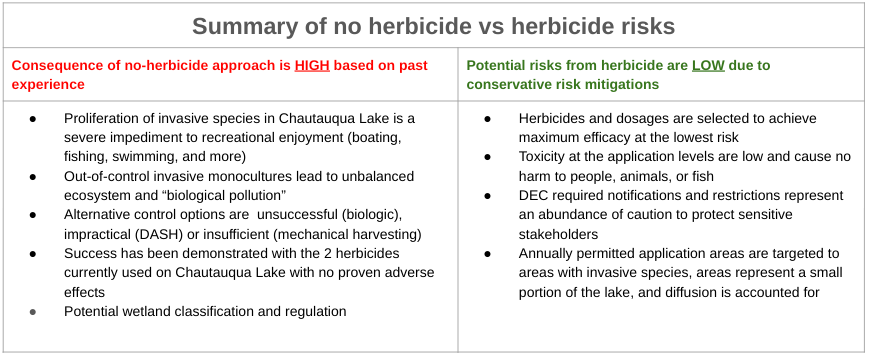The CLP is an all-volunteer, non-profit organization that simply wants Chautauqua Lake to be a healthy lake that can be enjoyed by all for fishing, swimming, and boating
We strive to improve the quality of our lake by keeping nuisance levels of invasive weeds in check
- Strategic planning of treatment areas based on comprehensive aquatic plant surveys, current scientific knowledge and lake management best practices
- Facilitation of herbicide permits on behalf of participating townships and villages
- Full compliance with all New York State Department of Environmental Conservation (DEC) requirements

Herbicide programs are normally facilitated by a single lake association on behalf of an entire lake and it’s lake communities, but on Chautauqua Lake, the “against” groups, including the CLA
1) Do not acknowledge invasives are a problem and at the same time,
2) Maintain that they are kept under control through mechanical harvesting and milfoil weevils.
The CLP exists to address this gap and facilitate action on behalf of the people most impacted.
Generally “neutral”
May be subject to political influence